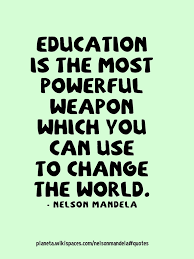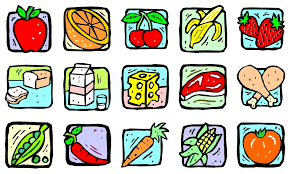I always struggled with science as a child in school in both Primary and High school. I found it extremely difficult and confusing (although I did still find certain aspects which were easier enjoyable) I only took biology to study from 3rd year onwards as this was the part of science I enjoyed the most. I carried on with biology up to higher however I had to work extremely hard to pass the course. I had an extremely good, enthusiastic science teacher who had a great love for science and made it very understandable and supported me a great deal to help me achieve my pas. Therefore, even though I found science very hard I was still able to grow a great interest especially in Biology.
On Tuesday, we had our first science input. Prior to this we were given a TDT to design a two-minute mini teach lesson. We had to choose and conduct an experiment of our choice. At first I completely panicked thinking what was I going to do and how I was going to do it. However, I recalled doing the ‘Milk, Fairy liquid and food colouring experiment ‘with my two younger brothers just before I came to university. I done the usual find an interesting experiment online one evening and decided to give it a go. Therefore, I realised this would be the best on to choose and to see if there would be any difference compared to the last time I tried it. When I done this with my brothers aged four and six, they were so amazed but so confused at the same time as was I. This made me realise the importance of researching and understanding the concepts and explanation behind an experiment. I also thought this experiment is more suitable to older children as the concepts are quite hard to understand.
Before this mini teach we were asked to complete a lesson plan.
O&E
SCN 2-19a
SCN 2-16a
Learning Intentions
-We are learning why surface tension happens
-We are learning about the importance of fats in surface tension
-We are learning how to conduct an experiment in a safe manner
Success criteria
-I can explain why surface tension happens
-I can explain why milk has a great importance in this experiment
-I will understand that different variables can have an impact on my experiment and why it may turn out different each time I conduct in
-I can conduct this experiment safely
Ingredients
I will need;
-Milk (Enough to fill the surface of a small bowl)
-Food colouring (A range of colours, small droplets)
-Fairy liquid (A few small droplets
-Cotton buds
Process
- Gather all the ingredients
- Pour the milk into a small dish/bowl/plate
- Dot the different colours of food colouring in the centre of the milk
- Dip the cotton bud into some fairy liquid
- Place the cotton bud in the middle of the colours and hold for a short period approx. 5 seconds
- Watch what happens

During the experiment, it is essential to ask questions to the children to make them question the experiment and think about what is going on. This will spark their thinking and develop a discussion to help them understand the concepts.
Questions
The first main question which should be asked Is ‘What is going to happen?’ Prediction is key before any experiment is completed this makes them think about what is going to go on and at the end they can evaluate the process and see what happens. Prediction is a way to think about your own scientific beliefs. The whole experiment revolves around your (hypothesis) the experiment is done to see if it really is true or works like you imagined. This means you can compare your prediction to your results.
During the experiment, it is clear the colour separates and spreads across the surface of the milk. The children will see this. They are likely to be amazed and confused this is a good time to hear their ideas and start a discussion by asking ‘Why do you think the colour is spreading’ at this point they will be trying to guess and explore different things which could be happening.
After listening to their opinions start to tell them the concept and ask another question ‘such as do you know the meaning of surface tension’ This is really getting them to think and discussion can be a good way to learn about new scientific ideas.
Lastly another question involving the process could be ‘Why did this happen, is there a specific ingredient in the milk?’ This gives them a small hint to think but allows them the opportunity to reach a conclusion on this experiment.
Other questions could be less involved with science and involving art as this experiment can also be called ‘The explosion of colours’
‘Has any other colours been formed’ this may occur if you use two primary colours together they may mix together to form a secondary colour.
‘What type of patterns can you see’ This may form swirls, circles or other shapes.
So, what does happen?
This involves surface tension
Water molecules are attracted to one another but not in the air
Water molecules try to make the surface as small as possible to get as close as they can to each other
Milk is made up mostly of water
The washing up liquid is designed to break up surface tension so it can dissolve and clean fats and oils
The very first time I completed this experiment it worked perfectly, however when I practiced again the colour did spread however not patterns were made.
I am also going to set myself SMART targets for this year
Specific – I want to visit the science centre and consider an area of chemistry (As I know less about this which will help with my knowledge) I will Look into this area in great depth.
Measurable – I will create a lesson plan for a series of lessons on this topic and build up activities and experiments which could be used.
Achievable – Make sure I watch videos, do research online, practice/watch experiments, become involved in a discussion to make sure I have an understanding, discuss my ideas with those in the profession.
Relevant- Link back to Experiences and outcomes for science at the appropriate level.
Time – Ensure research is completed before I go on placement and begin to plan and bring ideas together during placement time.
Research
As I studied Biology and learned about Sir Alexander Fleming in secondary school this interested me during the input and has made me want to look further into his life as a scientist and his greatest discovery.
About Fleming himself – He was born in Ayrshire on the 6th of August 1881. He moved to London at the age of 13 and trained as a doctor later in his life. His first degree was achieved I St Mary’s hospital medical school at the University of London. He also served in the army medical corps, then returned afterwards.
His discovery
Fleming had gone away for a month with his family. He left out a dish with staphylococcus, this became contaminated with a mould. He then realised all the bacteria had been destroyed. Due to an accident, he made a very great scientific discovery that could save lives. He initially though the bacteria were a very powerful enzyme therefore he considered this further only to realise it was an antibiotic which killed infection. This was one of the first to be discovered. He first called this mould juice but later renamed it as penicillin. He knew the importance this would have this meant he needed more people on board to help follow through with his findings. Howard Florey and Emst Chain isolated and purified the penicillin. This made it into medication form to be taken.



 as a challenge and see the ways in which another language is taught, I was really inspired by this teacher in particular as the children became very engaged quickly and had learned the basics of the Italian language by the end of the block.
as a challenge and see the ways in which another language is taught, I was really inspired by this teacher in particular as the children became very engaged quickly and had learned the basics of the Italian language by the end of the block. h group work which I see as a very successful way of educating young children as this can help them further their own understanding but also others in their peer group to understand.
h group work which I see as a very successful way of educating young children as this can help them further their own understanding but also others in their peer group to understand.

